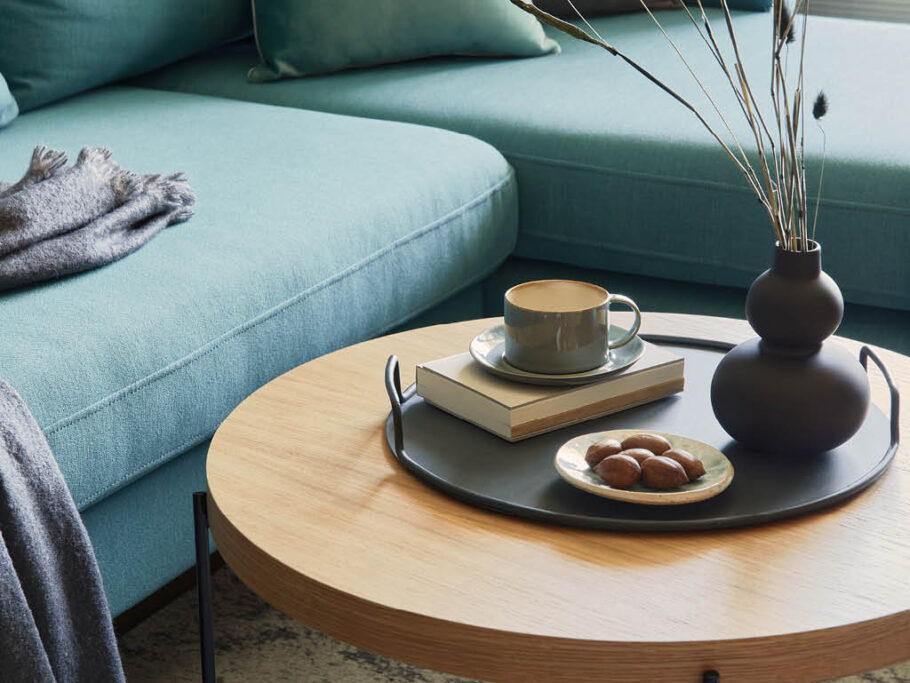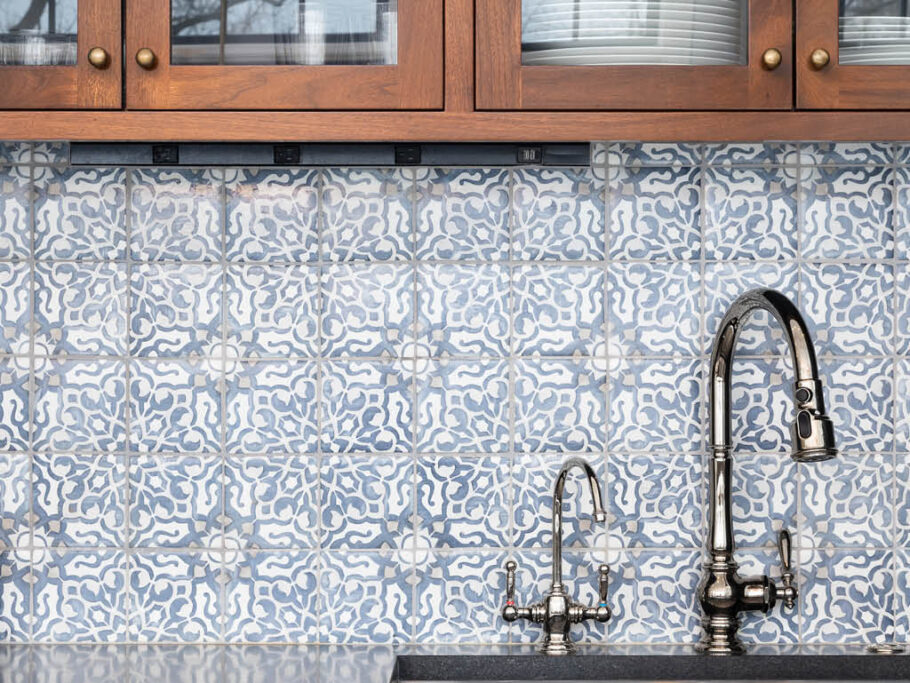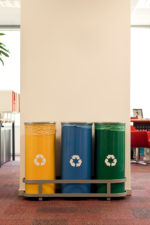Sweet Dreams
Interview with Luke Mickelson
Photography by Sleep in Heavenly Peace
Sleep in Heavenly Peace (SHP) founder and executive director Luke Mickelson discusses his nonprofit’s mission to build and deliver beds to children in need, how his organization impacts lives, and the joy that comes from helping others.
Tell us a little bit about yourself. Why did you start Sleep in Heavenly Peace?
I’m a farm kid from a small Idaho town who was raised by a single mom of five. As an adult, I‘ve always enjoyed mentoring kids, whether as a coach, in church, or as a Boy Scout leader. In 2012, I learned that a family in our community was trying to make ends meet and that their kids were sleeping on the floor. Even though I had never built a piece of furniture, I was determined to build a bed for them. I went into my garage, did all the measuring and planning, and got my scouts involved. They loved the idea—the purpose behind it was meaningful to them. They even delivered the bed themselves.
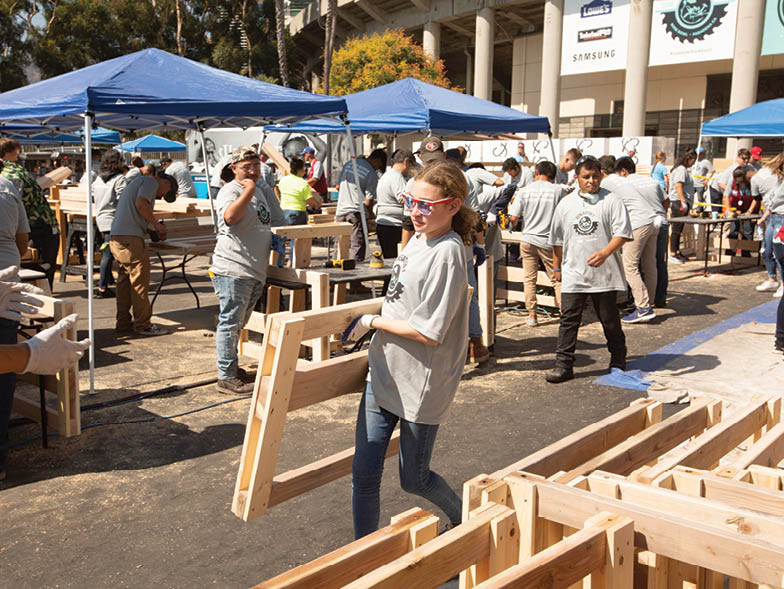
What happened next?
I expected that to be it. Later that year, though, I was sitting depressed on the couch a few weeks before Christmas, going through a sort of midlife crisis. My kids started complaining about not getting an Xbox for Christmas—yet other kids didn’t even have beds. I knew I could either stay in that state or get off the couch and teach my kids something, so I took them right out to the garage to build another bunk bed. We had so much fun. The problem was, I didn’t know what to do with the bed! [Laughs]
I put it on Facebook and said it was free for any child who didn’t have one. To my surprise, I was inundated with not only requests for the bed but also messages from friends asking how they could help.
Who did you end up giving the bed to?
I wanted this bed to go to a special home, and I gave it to a six-year-old girl named Hailey. She had just come out of homelessness—she had mostly been living out of the back seat of her mom’s car since she was born. Hailey finally had a bedroom, though, so she eagerly showed it to me and my friend Jordan, who helped me deliver the bed. It wasn’t in great shape. What stood out most, though, was the pile of clothes in the corner. We quickly realized that was the nest she had been sleeping on. When we started bringing the pieces in and putting the bed together, she erupted with joy once she realized what it was. Tears were streaming down her mom’s face too. Having been raised by a single mom myself, that really touched me.
This experience changed me almost instantly. On the ride home, I told Jordan, “No kid’s going to sleep on the floor in my town if I have anything to do with it.”
How did you go about keeping that vow?
I wanted to help more people, so I started looking for wood and tools. Lowe’s immediately stepped in; they’ve been our top partner since we started in 2012. We took our family’s Christmas budget, bought what we needed, and ended up building twenty-two more beds and delivering them by Christmas that same year.
The cool thing was how many people came out of the woodwork to help after seeing my initial Facebook post. My garage was filled with food, toys, sheets, and mattresses to take with the beds. And almost every night for those three weeks before Christmas, when I was working on the beds, people would just show up to assist me. I didn’t even know some of them, and others I hadn’t seen for twenty years.
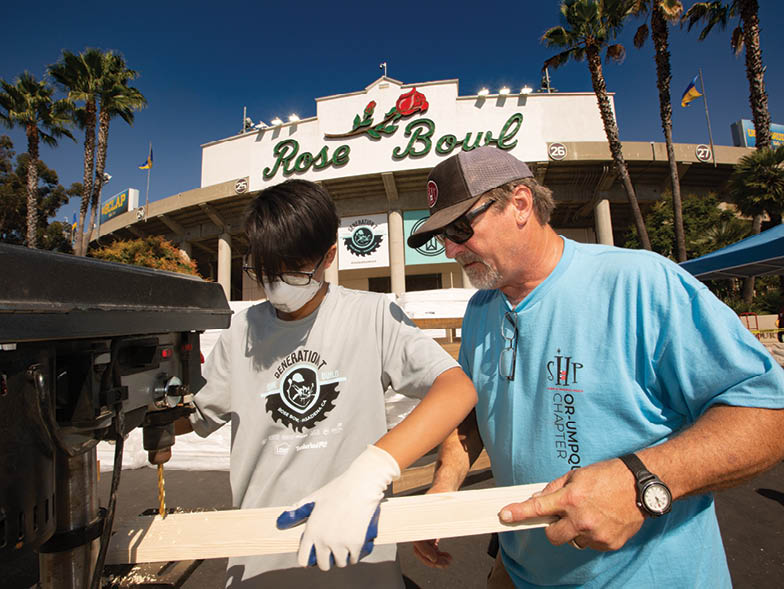
How quickly did you expand? How many beds have you delivered?
Between 2012 and 2017, SHP had only two local chapters in Idaho. Once we started expanding in 2017, especially into California, it exploded. Then, in 2018, we were featured on Mike Rowe’s show Returning the Favor. Within a year, we had gotten 5,000 new chapter requests and added 128 chapters. To date, we have over 330 chapters in four countries. Before 2018, we had built around 2,000 total beds, and now we build around 800 to 1,000 beds a weekend. We’ve delivered around 140,000 in just the past five years.
Do you only make bunk beds? Are they all the same size?
When we became a nonprofit, I decided we would only build and provide twin-sized beds for kids: bunk beds or bunks that could be split into single beds. Each one is built exactly the same down to the screw holes, whether it’s in Texas, Alaska, Canada, or Bermuda.
However, quicker and more efficient isn’t what we’re looking for; we could eliminate three stages of our process and speed up the builds. But we want to provide more service opportunities for more people, not reduce the need for volunteers.
Would you discuss the practical skills you’re teaching?
From day one, we’ve enjoyed giving volunteers who have no experience with drills, sanders, and saws (and might even be afraid of these tools) the opportunity to use them. So we’re now partnering with SkillsUSA to develop a program with workshop teachers to use SHP as a course. For a semester, a student can build twenty beds and help them get delivered. They learn construction skills, get service opportunities, have fun, and gain perspective. How cool is that?
How many requests do you get? What are your lead times?
Our chapter presidents have complete autonomy to review applications and select the people most in need. Most chapters have one to two hundred applications per year, but some have up to 4,000. We receive about 60,000 yearly applications with an average request of 2.2 beds. We have far more applications than beds we can build, and our application numbers keep going up. If you apply, some chapters respond within a few days, while others take a bit longer. Some beds are delivered within days, whereas others take months.
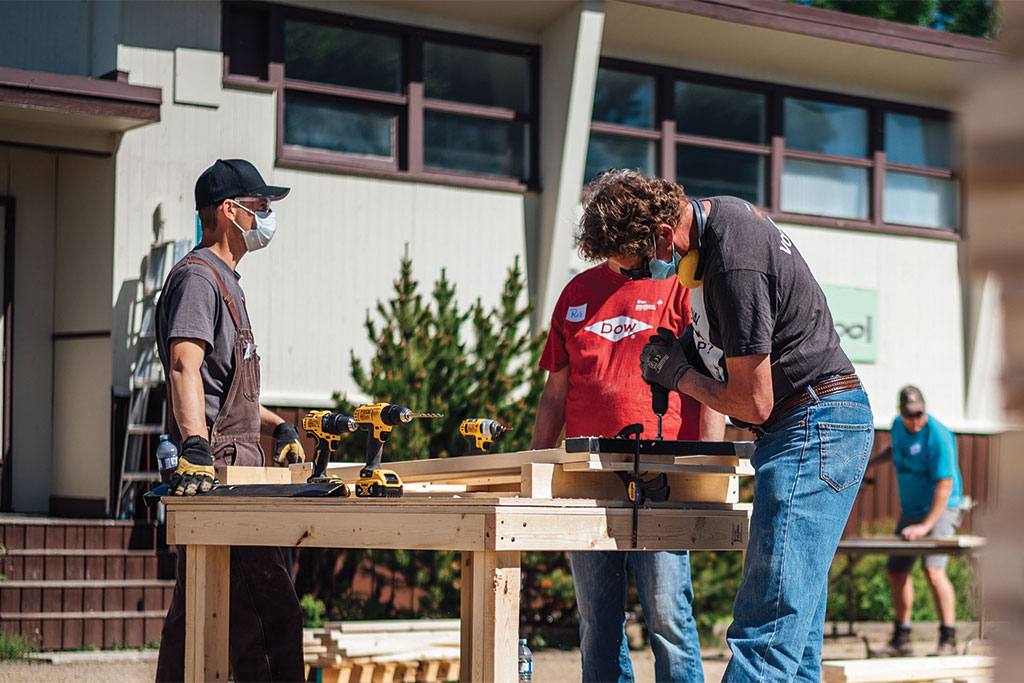
What does a bed mean to a child who doesn’t have one?
When I delivered that first bed, I quickly learned that it’s about more than just a poor night’s sleep. Mike Rowe told me after filming that he realized people call any room with a bed in it a bedroom and also say, “It’s time to go to bed.” But if you don’t have a bed, then it’s not a bedroom. And it’s not time for bed; it’s time to lay down.
It’s hard to think about how that impacts a child. There are studies on poor sleep, but there isn’t a lot of research on child bedlessness, especially its psychological impact—such as not having a safe place of your own or not wanting to have friends over because you’re embarrassed. It’s detrimental. When we deliver a bed, we make sure the kid knows it’s theirs. During deliveries, many kids are super shy, but as soon as they realize we’re putting together their bed, they light up. Seeing that melts your heart.
What misperceptions exist about this issue?
I get two comments when I tell people what I do. The first is “It’s not that bad. Every child has a bed.” Well, no. In at least 3 percent of the population, kids don’t have beds. So if you live in a town of 100,000, then 3,000 kids don’t have beds on average. The second reaction is “But this doesn’t happen here.” Yes, it does—it’s happening right next door. If these people could go on just one of our bed deliveries, they’d be changed after seeing the child’s reaction.
Has service always been ingrained in you? How does helping others change lives?
My mom and I were very close, and she influenced me a lot. She never missed a game and was my number one fan. I really respected her. And I always wanted to help, especially once I became the only man in the house at age fifteen.
I was also impacted by a particular instance of kindness. One year, we weren’t going to have much of a Christmas. My older brother had left, and it was just me, my three sisters, and my mom. When my mom walked outside one day, there was an envelope with $1,500 in our mailbox. I told her, “I want to be the person who does that.”
If you want true joy, you’ve got to stop focusing on yourself and see how you can help someone else. That’s what SHP volunteers experience. So many people walk away from build days covered in sawdust but crying or smiling—all because they were part of a group working with the shared goal of giving kids a place to sleep. Everyone coming together and working together is, frankly, what I think this country needs and humanity needs today.
For more info, visit shpbeds.org



